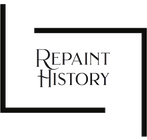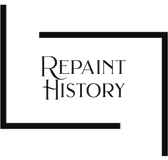Artist We Love: Erin Lawlor
Erin Lawlor was born in Epping, UK in 1969. Lawlor lived in France from 1987 to 2013, and holds a BA in History of Art and Archaeology from the University of Paris IV – la Sorbonne (1992). She currently lives and works in London. Lawlor has exhibited extensively internationally over the last twenty years; recent exhibitions of note include a presentation at the Ny Carlsberg Glyptotek Museum, ‘Maleri:nu (Paint:now)’, in Copenhagen in 2016; a substantial solo exhibition at the Mark Rothko Art Centre in Latvia in 2017; as well as recent solo exhibitions at Rod Barton, Brussels (2016), Espacio Valverde, Madrid (2018), Fifi Projects, Mexico (2018), Fox/Jensen Gallery, Australia (2018), and Miles McEnery Gallery, New York (2019). She was one of three painters showcased in the Space K exhibition ‘British Painting 2019’ in Seoul, South Korea, this summer. Lawlor is currently preparing for a solo exhibition at Fox/Jensen/McCrory Gallery in Auckland, NZ, for next spring. She and her work will also be featured in the book ‘Free Spirits’ by Rosie Osborne, to be published next week.

What are some of the challenges that you have faced as an artist and how have you managed to overcome them?
Many of my struggles have been fairly generic – the time and money to maintain a studio practice in the formative years of my work being the main one. Juggling motherhood and painting, plus other bread-and-butter jobs, was hard at times – but also seriously taught me both what my priorities were and are – as well as the necessary time-management. I think I have always struggled with a sense of legitimacy – there were no professional artists in my immediate family, and I didn’t go to art school. Looking back, I think I very much underestimated the role of art school in terms of a network and support structure. It was for a long time very hard for me to gain credibility at all in Paris, through not having gone through the system, compounded by the fact that the scene was very anti-painting at the time – something which has considerably changed in recent years.
I got my first real breaks through the possibilities of visibility that came with the development of social media, and connections with artists in other countries; the US and Germany in particular were much more sympathetic to abstract painting. And I learned to be very pro-active in terms of connecting with like-minded people, and even curating shows.

How important is mentorship for an artist navigating the art world?
It can be a huge help. For those that go through art school, it seems to happen quite organically, as part of a nurturing environment and community. I had very little in the way of mentorship, and it undoubtedly made it very hard – it’s probably the main element in my trajectory as a self-taught painter that I have at times regretted. And yet I am in many ways an example of the fact that it is possible to find your own way. At the end of the day, the work in the studio is the most important thing – that, and a good dose of stubbornness! I do try to be as supportive as I can of other artists – I know how grateful I was for any support or advice; and the art world has become what seems at times like a strange and many-headed monster, it’s fast and can be ferocious. It can be hard to navigate.

What advice would you give a woman entering the art world?
Be clear with yourself about why you are doing what you are doing – it’s easy these days to confuse the work and the market; and you have to be careful how you represent and position yourself more than ever in these days of instantaneous and all-pervasive branding and image. Longevity, a sustainable studio practice, if that’s what you’re aiming for, require hard work in the studio and clear priorities.
Generally, I would say – and this goes above and beyond the art world – if you are lucky enough to be in a position of privilege - be aware of it; use it wisely; share it widely. Community is key. And vigilance - it is too easy to forget how recent many advances are, and how fragile still.

What is the most interesting texture/object you’ve drawn inspiration from?
The obvious answer concerning my own work is oil paint – I find it endlessly fascinating, and the medium is very much at the root of my work. Oil paint has historically often been equated with a form of skin, and what no doubt brought me to it in the first place was a desire to capture the human. The work has shifted and become much more abstract over the last twenty years; that said, the sense of capturing something alive is still fundamental to me, and that very aliveness is what to me defines good painting.
Has your practice changed over time?
Yes. Very much so. For the first ten years I was painting clearly figurative works, essentially portraits, and a few figures. It took a leap of faith to let go of the human figure to go with the brush-mark, the oil paint, towards more abstract works, although the grounding in something quite organic has remained a constant. The second big shift came about quite naturally as the mark-making and works got bigger, and the paint more liquid, when I began to work on the ground. The relationship to the canvas and the work changes fundamentally with that shift - it is a way of working that implies a physical engagement with the whole body. In recent years, the main changes have been within the composition, as a result of a growing confidence in my visual language, which has allowed an upping of both complexity and colour.

What quote do you live by?
Georgia O’Keeffe once said something about having been terrified her whole life, but not letting it get in the way of doing what she wanted – while I don’t live by that, I wish I did! It is a thought that comes back to me regularly, and I hope gives me a nudge in the right direction. Otherwise – there’s something my father always used to say – ‘The harder I work, the luckier I get’. That has certainly stuck with me!
Tell us your favourite artist(s), past and present
The painters who really brought me to painting myself were late Titian, Soutine, Auerbach; and they all still resonate with me – there is something absolutely timeless about the aliveness of the paint. In a very different genre, I have a soft spot for Chicago surrealist Gertrude Abercrombie. And I’m a huge fan of young Berlin-based painter Stefanie Heinze, who shows in London with Pippy Houldsworth Gallery.



